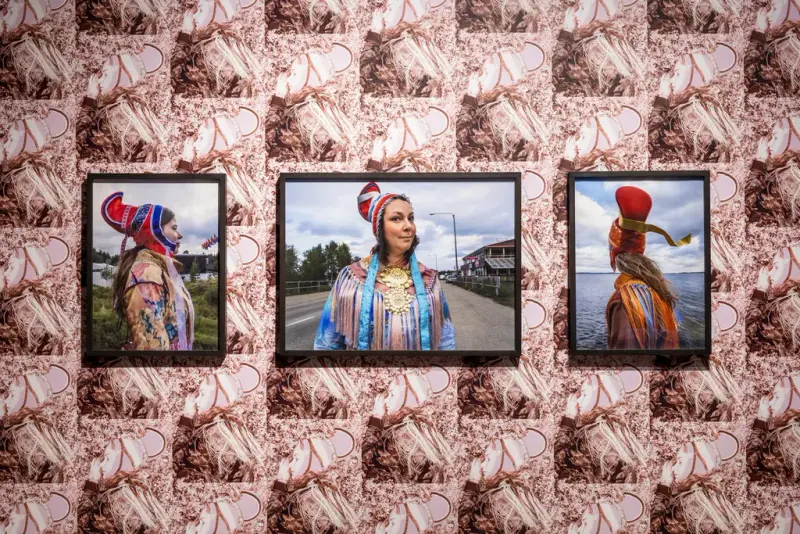Trondheim Kunstmuseum presents the most comprehensive exhibition in Norway to date of the Sámi-Finnish artist Outi Pieski.
Based in Ohcejohka (Utsjoki) on the Finnish side of Sápmi—the ancestral land of the Sámi people, inhabited for thousands of years long before today’s national borders—Pieski’s work engages with Sámi history, philosophy, and culture, and how these continue to shape Sámi life today.
The exhibition brings together around fifty works, offering a multifaceted view of her artistic practice. Through painting, photography, textiles, video, printmaking, and installation, Pieski explores the relationship between humans and nature. For her, the act of creating art is a deeply personal and strengthens the connection to landscape and nature, both within and around us. From a Sámi perspective, humans do not exist above nature but in a position of mutual dependence: we coexist with all living beings in reciprocal respect. Nature is understood as an interconnected system, where all beings—visible and invisible—are related and reliant upon one another.
The exhibition’s title, Eatnamastit, derives from a new work created specifically for this presentation and commissioned by Malmö Konstmuseum. The term may be understood as the act of grounding and anchoring oneself in nature. As a recurring theme throughout the exhibition, the landscapes of her home region appear both as subject matter and as a source of inspiration and identity. In Pieski’s art, the landscape embodies the lived experiences and memories of her own and earlier generations.
In a Norwegian context, Pieski’s significance is further highlighted by her commission for one of the most important public art projects in Oslo’s new Government Quarter. Her monumental artwork AAhkA draws on Sámi beliefs and philosophy, invoking Mother Earth as a legal entity. The title also refers to sacred mountains in Sápmi that bear this name. In Southern Sámi, Aahka, and in Northern Sámi, Áhkku, the word translates as “grandmother,” “elder woman,” and “protector of the earth.”
Educated at the Academy of Fine Arts in Helsinki (2000), Pieski has established herself as one of the leading artists from Sápmi. She has presented solo exhibitions at Tate St Ives (2024), Sámi Museum Siida (2023), Bonniers Konsthall (2022), and EMMA in Espoo (2018). Her work has also been featured in group exhibitions at Tate Modern (2025) and MARKK, Hamburg (2023–24), as well as in major international biennials including the Venice Biennale (2019), Gwangju Biennale
(2021), Biennale of Sydney (2022), and GIBCA – Göteborg International Biennial for Contemporary Art (2023).
Eatnamastit is produced in collaboration with Malmö Konstmuseum in Sweden.
"The exhibition is organized in collaboration with Malmö Art Museum.
Curated by Anna Johansson and Marianne Zamecznik
